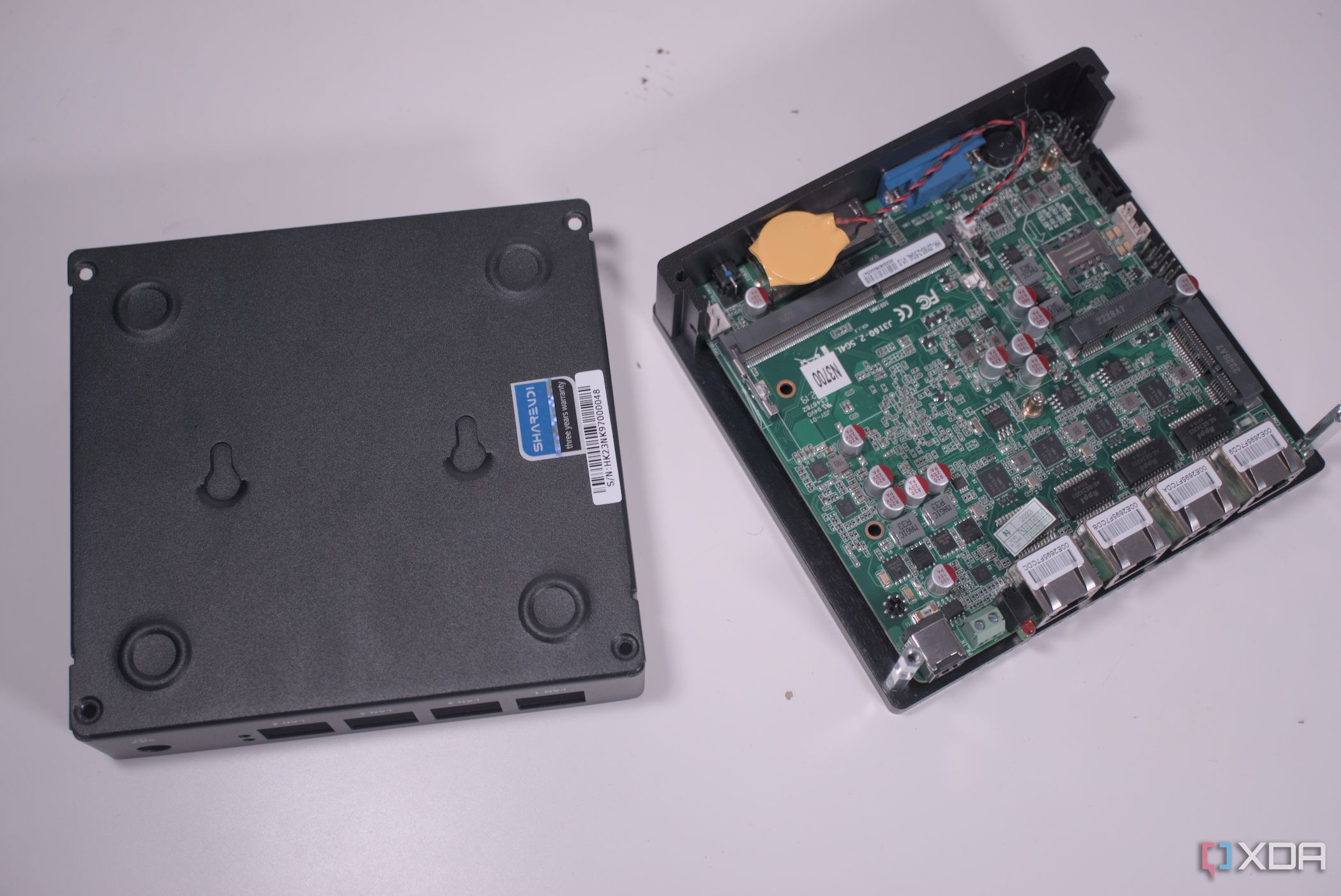



Classic Star Wars PC games hold a special place in the hearts of gamers worldwide. Titles like Star Wars: Knights of the Old Republic, Jedi Knight II: Jedi Outcast, Star Wars: Dark Forces, Star Wars: X-Wing vs. TIE Fighter, and Star Wars: Republic Commando are all cited as groundbreaking in their genre for their storytelling, mechanics, and connection to the expanded universe. Despite their aging graphics and dated interfaces, these games remain popular, often showing up in gaming community recommendations and nostalgia-driven discussions. Yet, in the current era of game remasters and re-releases, these specific titles have yet to get the full modern treatment that has benefited other franchises like Resident Evil, Final Fantasy, and Crash Bandicoot.
The market for nostalgia-driven remakes is booming, as seen by the success of recent remasters like Tony Hawk’s Pro Skater 1+2 and the Resident Evil remakes, each demonstrating that there is both commercial and cultural value in reviving beloved classics. For Star Wars games, a remaster could mean much more than updated visuals. It presents an opportunity to introduce these classics to younger audiences who may have missed them the first time around, while also providing long-time fans with enhanced gameplay and modern conveniences like improved controls, cloud saves, and online multiplayer modes. Modern remasters often include behind-the-scenes content or developer commentary, adding value for hardcore fans and collectors.
Industry experts argue that the success of recent Star Wars media, from Disney+ series to blockbuster films, has created renewed interest in all things Star Wars, amplifying the demand for high-quality game revivals. According to data from market research firms, remastered and nostalgia-driven titles consistently outperform new, lesser-known IPs in both sales and user engagement. This momentum is strong enough that companies such as Aspyr have recently remastered Star Wars: Episode I – Racer and Republic Commando for modern consoles, but many top-tier PC classics remain untouched. The gap presents both a missed revenue stream and an opportunity to strengthen the Star Wars brand further.
Ultimately, remastering these Star Wars PC games would provide both legacy value and new commercial opportunities. It would not only honor the creativity and achievements of past developers but also serve the ever-growing fanbase seeking modern ways to revisit or discover the galaxy far, far away. With advances in game development technology, fan demand, and proven market trends, the case for remastering classic Star Wars games has never been stronger.

The allure of building your own router using open-source platforms like OPNsense or pfSense is undeniable for tech-savvy individuals seeking performance, customization, and deeper understanding of their home or office networks. These software solutions provide an impressive suite of features typically reserved for enterprise-grade hardware, such as advanced firewall settings, in-depth traffic analysis, load balancing, and virtual private network (VPN) capabilities. Enthusiasts who elect to build their own routers often cite two primary motivations: the desire for complete control over their network environment and the cost savings associated with repurposing old PC hardware or investing in efficient mini-PCs compared to buying premium consumer routers.
Real-world examples reinforce the benefits and challenges of this approach. For instance, cybersecurity professionals may favor pfSense for its granular access controls and extensive community support, enabling bespoke configurations for complex environments. Conversely, small business owners sometimes turn to OPNsense due to its user-friendly interface and emphasis on security patches and updates. However, these advantages come with a learning curve. Installing and configuring either system requires attention to network fundamentals and regular maintenance to address vulnerabilities and performance issues. Reports from user forums and technical blogs frequently highlight both the satisfaction of a tailored solution and the frustration when troubleshooting intricate settings or driver compatibility issues.
From a practical standpoint, the DIY router route is most rewarding for users who appreciate tinkering with technology, similar to building custom PCs or smart home automation. For the average homeowner, however, a traditional consumer router may still make more sense due to its plug-and-play convenience and robust technical support. The distinction is clear: while advanced features are enticing, they often exceed the needs and patience of the typical user, who prioritizes reliability and simplicity over flexibility.
Experts anticipate a growing market for hybrid networking products that combine the security and customization of open-source firmware with the accessibility of mainstream routers. Companies like Ubiquiti and Netgear are experimenting with platforms that bridge this gap, offering expanding user choices. In sum, building a router with OPNsense or pfSense is best suited for those willing to invest time and effort into mastering their network, but promising innovations may democratize these capabilities for broader audiences in the near future.

OctoPrint has long been the go-to solution for remote 3D printer management, renowned for its versatility and robust plugin ecosystem. Traditionally run on single-board computers like the Raspberry Pi, OctoPrint now extends support to Windows-based PCs and mini-PCs, widening accessibility for users who may not have a dedicated Pi or who seek to leverage existing hardware. This shift is especially timely, given the global hardware shortages and price volatility that have affected Raspberry Pi availability in recent years. With Windows compatibility, more creators—from hobbyists to professional engineers—can integrate OctoPrint into their workflow without new device purchases.
In practical terms, installing OctoPrint on Windows involves setting up Python, downloading the OctoPrint installer, and configuring printer connections. For users transitioning from Pi, the process is familiar, whereas newcomers benefit from greater flexibility, including using the same machine for slicing models, managing print jobs, and running OctoPrint’s web interface. With remote access enabled, users can pause, resume, or cancel prints from anywhere, receive progress notifications, and even watch live webcam feeds. This capability is invaluable for educators overseeing print farms, designers iterating prototypes quickly, or anyone aiming to optimize multi-machine workflows.
The Windows version of OctoPrint also supports the community’s extensive plugin ecosystem, enabling features such as predictive maintenance, cloud backups, and integrations with cloud storage platforms. Expert users highlight tools like PrintTimeGenius for superior time estimations and OctoLapse for time-lapse videos, both of which function seamlessly on Windows. This parity assures users they aren’t making compromises when shifting from Linux to Microsoft ecosystems.
Industry trends suggest that remote management will become a staple of future 3D printing solutions. As more manufacturers embed network connectivity directly into printers, software like OctoPrint will play a crucial role in unifying disparate hardware into a streamlined, accessible platform. In summary, installing OctoPrint on a Windows Mini PC lowers the barrier to powerful print management, equipping a wider audience with the tools to maximize uptime, experiment creatively, and scale operations efficiently.
The recent release of iOS 18.4.1 has caused significant alarm among Apple users due to mounting reports of iPhones becoming inoperable—commonly referred to as “bricking”—shortly after installation. These incidents have quickly spread across user forums, social media platforms, and tech news outlets, with many affected individuals describing a total loss of device functionality, leaving their phones stuck on the Apple logo or in recovery mode. For students, professionals, and anyone dependent on their mobile device for daily tasks, the disruption has been severe, resulting in missed calls, interrupted workflows, and even loss of access to essential apps and data.
Experts in mobile security emphasize that such problems, while rare, highlight the risks inherent in rushing major software releases without comprehensive real-world testing. Apple’s typical update process involves phased rollouts and feedback from beta testers, but the speed and scale of iOS 18.4.1’s deployment appear to have amplified its impact. Many users on Reddit and Apple Support communities recommend holding off on installing the update until Apple provides a statement or subsequent fix, especially for those using older devices that may be more susceptible to compatibility issues. This advice echoes broader industry best practices: always back up your data and closely follow official support channels when significant updates are released.
For Apple, the reputational stakes are high. Past software issues—such as the notorious iOS 8.0.1 update, which affected cellular connectivity—have shown that public confidence can be shaken with just a few high-profile technical missteps. Apple’s response has typically involved urgent engineering patches, expanded customer service outreach, and clearer communication about affected models and fixes. In this case, reports suggest the company is investigating the root causes and preparing an emergency update to address widespread bricking complaints. Meanwhile, device owners are urged to consult the official Apple Support site for troubleshooting or visit certified technicians if their phones are already affected.
On a broader scale, the iOS 18.4.1 issue will likely spark renewed debate about software release cycles and the tension between innovation and stability. For consumers, it’s a firm reminder that vigilance—such as reviewing user feedback and waiting for initial bug reports—remains essential when managing major updates in an increasingly interconnected digital world.
Automating the note-linking process in Obsidian represents a significant leap forward in personal knowledge management. As the volume of digital notes increases for students, researchers, and professionals alike, manually linking ideas becomes impractical, leading to information silos and cognitive overload. Modern plugins and native Obsidian features now allow users to create dynamic connections between notes with minimal effort. These tools can analyze note content, recommend relevant links based on context, or even auto-create bidirectional links as you write, fostering a vibrant and discoverable knowledge graph.
Real-world use cases abound. Consider graduate students compiling hundreds of research articles: with the "Dataview" and "Auto Link Title" plugins, references and recurring topics are automatically connected, making it easy to uncover relationships and generate literature reviews. Professionals building a "second brain" rely on automated backlinks to surface cross-disciplinary insights or revisit previously overlooked ideas. The "Text Expand" and "Templater" plugins further streamline note creation, embedding structured links instantly and ensuring organizational consistency over vast repositories of information.
Expert productivity coaches emphasize the long-term value of systematic note interlinking. When automation removes the manual friction, users experience faster idea retrieval, more creative connections, and reduced risk of redundant work. Moreover, the spatial visualization tools in Obsidian, such as Graph View, become exponentially more useful when links are exhaustive and accurately reflect conceptual relationships. Early adopters report measurable time savings, heightened clarity, and more enjoyable workflows—attributes that support both academic success and professional innovation.
Looking ahead, the trend of smart note-linking is likely to influence the broader landscape of digital productivity tools. Competitors like Roam Research and Notion are actively developing similar automation capabilities, underscoring market demand for smarter, context-aware knowledge systems. For users, embracing automatic note linking in Obsidian is not just a convenience; it’s an essential strategy for thriving in information-rich environments where insight and organization drive lasting results.
This week’s analysis of the productivity landscape highlights a convergence of digital tools, structured systems, and an intensified focus on sustainable performance. Rather than relying solely on bursts of motivation, today’s most effective individuals and teams are refining processes to embed productive habits directly into their daily workflows. Strategies such as atomic habits—incremental habit building popularized by experts like James Clear—are proving instrumental in establishing routines that persist through distractions and stress. The result is long-term productivity less prone to burnout and more conducive to well-being.
Beyond habits, emerging digital planning platforms are redefining how content and projects are managed. Solutions like Notion, ClickUp, and Obsidian enable granular tracking of priorities, progress, and dependencies, making strategic content planning more transparent and actionable. With privacy becoming a top priority, privacy-focused AI tools now provide advanced analytics and workflow automation without compromising user data, emphasizing the synergy between empowerment and security.
Digital wellness is another vital pillar of this renaissance. Blue light glasses, mindfulness apps, and intentional screen break reminders are increasingly popular, supported by data that links digital health practices with higher productivity and satisfaction. Organizations are starting to integrate wellness policies alongside productivity benchmarks, recognizing that prolonged output is only possible when well-being is protected.
From a business perspective, optimizing these systems translates to measurable growth. Leaders deploying productivity analytics and automation report higher engagement and lower churn, while employees describe a greater sense of control and achievement. The future of productivity lies in blending intuitive, human-centric technologies with robust support structures—creating an environment where individuals and teams alike can flourish, adapt, and sustain high performance in an ever-changing digital landscape.
